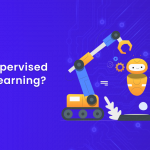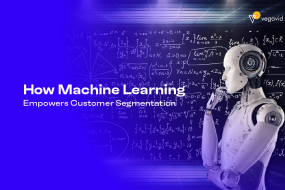
Large Language Models (LLMs) have rapidly evolved from impressive research projects to real-world tools impacting various industries. These complex algorithms, trained on massive datasets of text and code, can generate human-quality text, translate languages with incredible accuracy, and even answer your questions in an informative way. Here are 10 real-life applications of LLMs showcasing their transformative potential:
1. Content Creation:
- Blog posts and articles: LLMs can draft well-structured blog posts, news articles, and marketing copy, saving writers time and generating creative ideas.
- Social media engagement: LLMs can craft engaging social media posts and respond to comments, boosting audience interaction and brand awareness.
- Fiction and scripts: LLMs can assist writers with brainstorming ideas, generating character dialogue, and even writing entire drafts, sparking creativity and accelerating writing processes.
2. Language Translation:
- Real-time communication: LLMs can offer near-instantaneous, accurate translation for conversations, meetings, and presentations, breaking down language barriers and facilitating global collaboration.
- Document translation: LLMs can translate documents of various lengths and formats, from legal contracts to research papers, with remarkable accuracy and fluency.
- Localization for diverse audiences: LLMs can adapt marketing materials and websites to different languages and cultural nuances, expanding reach and resonating with global audiences.
3. Chatbots and Virtual Assistants:
- Customer service: LLMs can power chatbots that answer customer inquiries, resolve issues, and offer personalized support, improving customer experience and reducing wait times.
- Information assistants: LLMs can function as virtual assistants, answering questions, summarizing information, and scheduling tasks, enhancing productivity and streamlining personal workflows.
- Educational companions: LLMs can serve as interactive learning companions, providing explanations, answering questions, and adapting to individual learning styles.
4. Search and Information Retrieval:
- Personalized search results: LLMs can understand user intent and context to deliver more relevant search results, improving information access and discovery.
- Summarization and knowledge extraction: LLMs can automatically summarize key points from large documents and extract relevant information, saving users time and effort.
- Question answering systems: LLMs can answer complex questions based on vast knowledge bases, providing instant access to accurate and informative answers.
5. Code Generation and Programming:
- Automating repetitive tasks: LLMs can generate code to automate repetitive programming tasks, freeing developers to focus on complex logic and innovation.
- Creating prototypes and demos: LLMs can generate basic code prototypes and demos based on user specifications, accelerating development and testing cycles.
- Explaining and documenting code: LLMs can automatically generate clear explanations and documentation for existing code, improving codebase understandability and maintainability.
6. Creative Design and Media:
- Music generation and composition: LLMs can create original music pieces in various styles, assisting musicians in brainstorming ideas and composing melodies.
- Generating scripts and storyboards: LLMs can help writers develop story ideas, generate scripts, and even create visual storyboards, fueling creative exploration and collaboration.
- Art and design generation: LLMs can create unique artwork based on user prompts and styles, inspiring artists and designers and exploring new creative possibilities.
7. Education and Learning:
- Personalized learning experiences: LLMs can adapt learning materials and assessments to individual student needs and preferences, fostering personalized learning journeys.
- Automatic grading and feedback: LLMs can grade essays and provide personalized feedback, saving educators time and offering students insightful learning opportunities.
- Creating accessible learning materials: LLMs can translate and adapt learning materials to different languages and accessibility needs, ensuring inclusive education for all.
8. Scientific Research and Discovery:
- Literature review and analysis: LLMs can analyze vast amounts of scientific literature to identify research gaps, trends, and potential breakthroughs, accelerating scientific progress.
- Generating and testing hypotheses: LLMs can assist researchers in developing new hypotheses and designing experiments, driving innovation and discovery across various fields.
- Communicating research findings: LLMs can help create summaries and reports of research findings, facilitating better communication and collaboration among scientists.
9. Marketing and Advertising:
- Targeted advertising and personalized marketing: LLMs can analyze vast amounts of data to create personalized marketing campaigns and target specific audience segments effectively.
- Generating ad copy and creative content: LLMs can draft engaging ad copy and social media posts, capturing attention and driving conversions for brands.
- Predicting marketing trends and customer behavior: LLMs can analyze consumer data to predict emerging trends and anticipate customer behavior, informing marketing strategies and campaigns.
10. Cybersecurity and Fraud Detection:
- Identifying suspicious activity and malware: LLMs can analyze text and code to detect anomalies and potential cyber threats, safeguarding systems and user data








